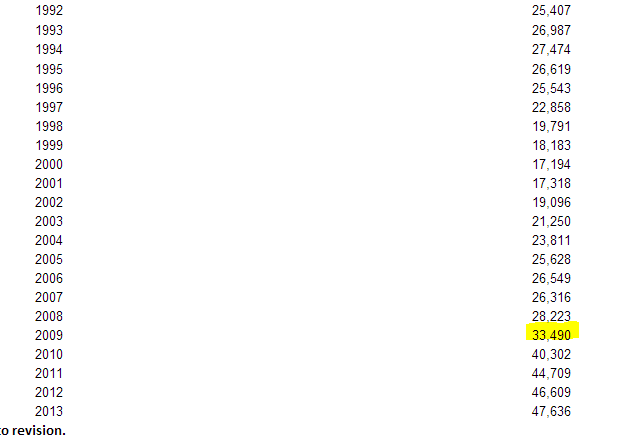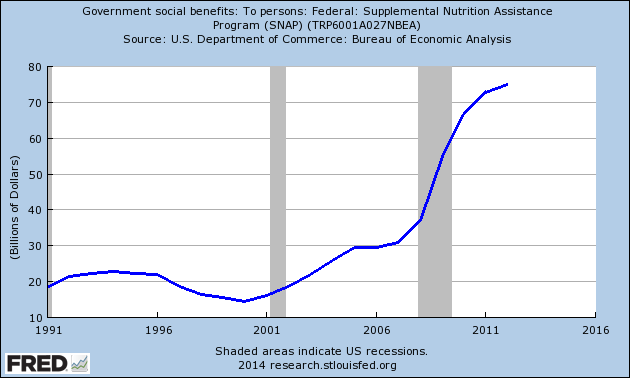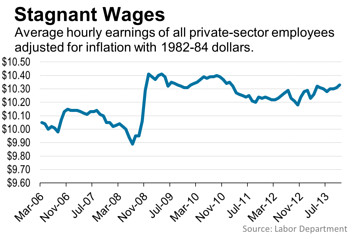When a dollar store is too expensive: Growing class of poor Americans unable to afford items at dollar stores.
- 0 Comments
You know things are tough when people face a challenge purchasing goods at dollar stores. The dollar store economy has been robust for the last decade as the US economy has shed the weight of millions of middle class families. As more people move down the economic ladder, these stores hit a critical niche. I remember when dollar stores were simply a place to find excess junk inventory. That changed over the last few years. Many of these dollar stores like the 99 Cents Store and Family Dollar now have a giant section of food. To many families, these are their supermarkets. In fact, a giant portion of revenues come from food items as people shift gears into lower priced items and there are few items more necessary than food. No longer are off the wall brands on the shelves but name brands trying to capture the funds from the 47 million Americans on food stamp debit cards. However, there are signs that even dollar stores are having a tough time with some customers given the extremely tight budgets they face.
The struggles for those on the financial edge
It was interesting to hear the CEO of Family Dollar explain the dynamics of tougher times for the poor and weaker than expected earnings:
“(Reuters) For the last several quarters, we’ve discussed the economic challenges our customers are facing. Over the last two years, I think we’ve seen a growing bifurcation in households. Higher-income households who have benefited from market gains, better employment opportunities, or improvements in the housing markets have become more comfortable and confident in their financial situation. But our core lower-income customers have faced high unemployment levels, higher payroll taxes, and more recently reductions in government-assistance programs. All of these factors have resulted in incremental financial pressure and reduction in overall spending in the market.â€
The media is busy singing the praises of a record in the stock market and a boom in real estate but we still have a peak in food stamp usage:
Over 47.4 million Americans are on food stamps. That is an incredibly high number. The number of food stamp users has grown dramatically during the nearly five years of recovery starting in 2009:
In 2008 we had 28 million people on food stamps. Today it is up to 47 million (an increase of 19 million). This is a massive portion of our population that literally has no savings and no assets to their name. Where did these additional 19 million people come from? Most have come from the destruction of good paying middle class jobs to a new economy based on low wage capitalism and high level cronyism.
Spending on food stamps is still at a record level:
Remember how there was supposedly no inflation in the economy? Low cost fast food leader McDonald’s is thinking about adding items to their $1 dollar menu that cost more than $1 dollar:
“(USA Today) The McDonald’s Dollar Menu may be outgrowing its name — and its $1 price point.
The fast-food giant, struggling to keep sales up in an ultracompetitive environment, says it is testing a seriously different version of the Dollar Menu — dubbed Dollar Menu & More — that sells an array of items at $1, $2 and even $5 so-called shareable items such as 20-piece boxes of McNuggets.â€
All of this matters when wages have been stagnant for nearly a generation:
The media is largely silent on this and since poor Americans have little money to fund lobbying groups, their voices will continue to be muted. The inequality in the US is now at levels last seen during the Gilded Age. Congress is full of millionaires that are so removed from the struggles of working class Americans that they have completely forgot about a large portion of our society. When the dollar economy is in trouble you know things are tough for poorer Americans (and this is now a very large group).
If you enjoyed this post click here to subscribe to a complete feed and stay up to date with today’s challenging market!



 If you enjoyed this post click here to subscribe to a complete feed and stay up to date with today’s challenging market!
If you enjoyed this post click here to subscribe to a complete feed and stay up to date with today’s challenging market!